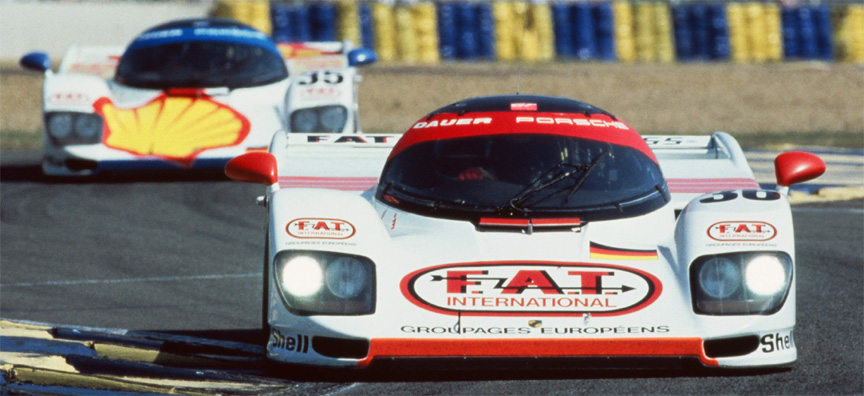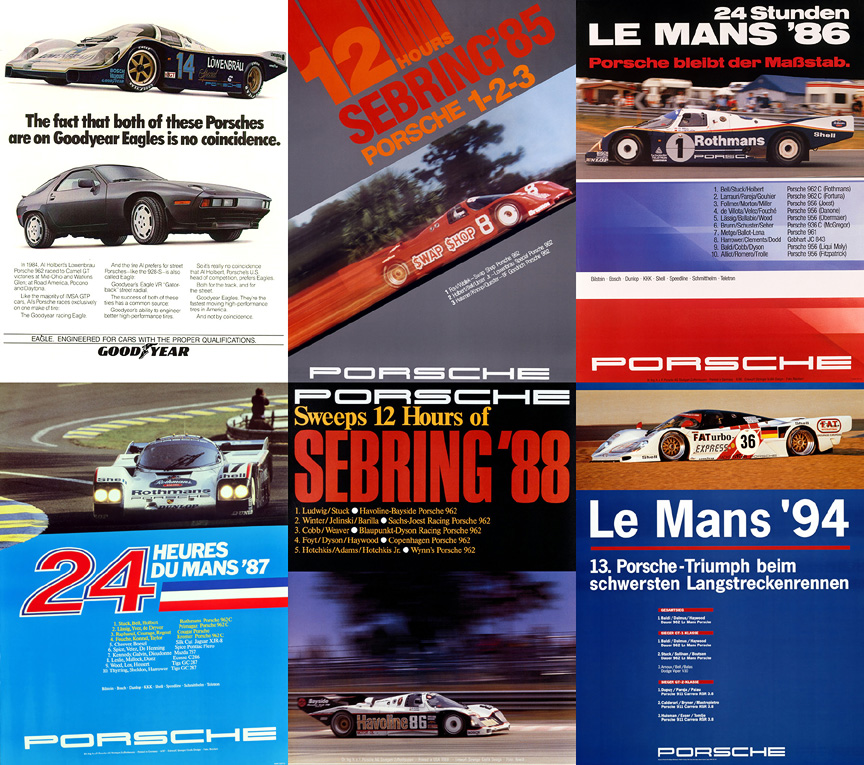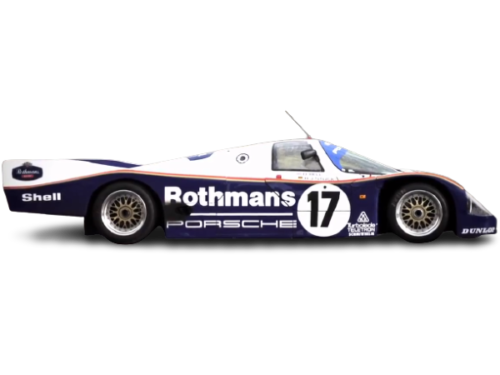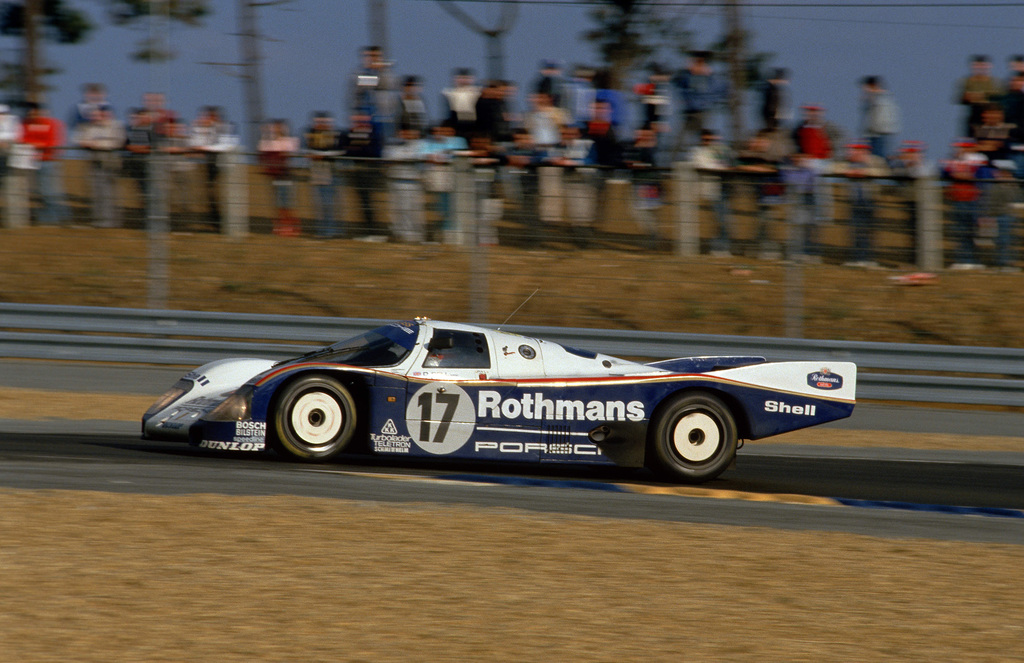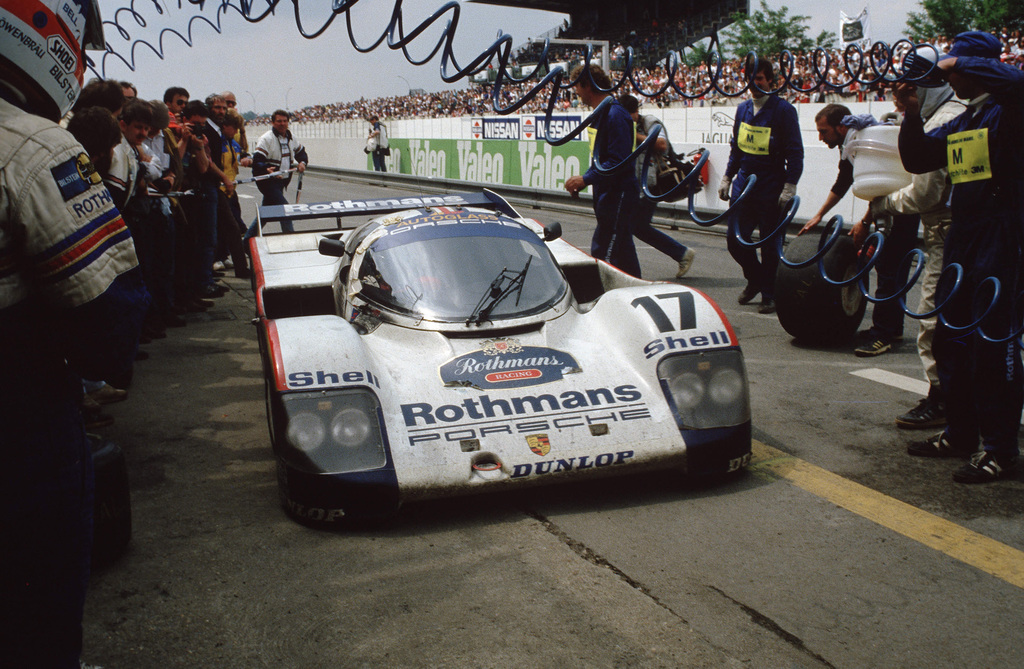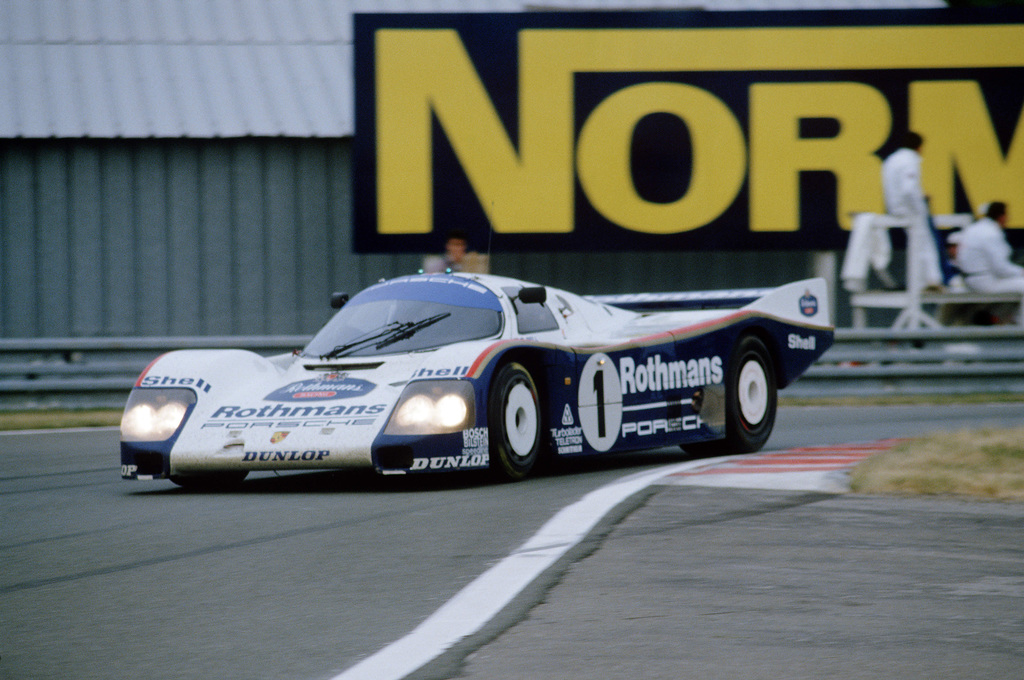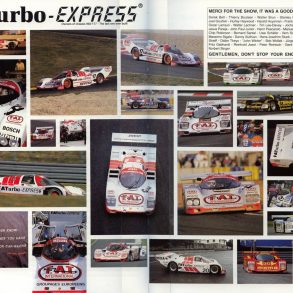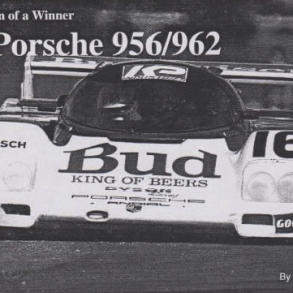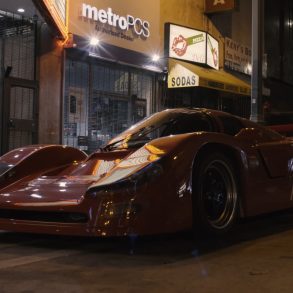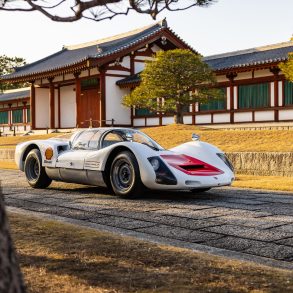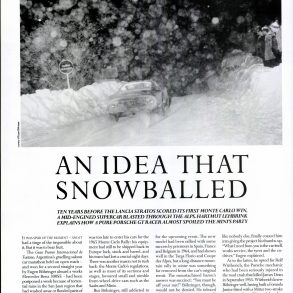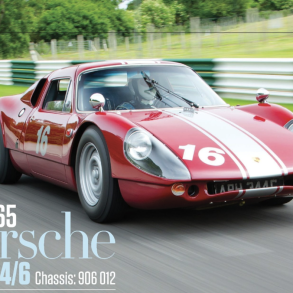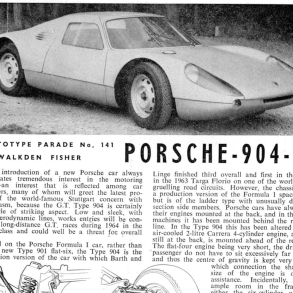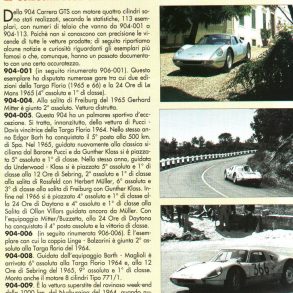Porsche 962 & Porsche 962 C (1984-1991)
Premiere: 1984 February 3 at qualification for Daytona 24h / Achievements: Le Mans winner 1986-1987-1994
Some Background
Porsche met Group C regulations introduced by FISA in 1982 with a fresh concept. This new car would be the focal point of factory racing efforts. These new Group C regulations led to the re-birth of the two-seat, special race sports car which no longer had to be declared a prototype for some future production car, but rather was seen as a high-performance vehicle in its own right.
The 956 from which evolved the later 962, developed to comply with American IMSA race regulations but raced around the globe – was the first Porsche race car with a monocoque chassis and an aerodynamically designed underside to generate ground effects The use of advanced fuel injection and ignition systems not only enabled the 2.6 litre engine to develop 630bhp, but combined this with low fuel consumption – a crucial advantage given the racing regulations of the time.
The sporting career of the 956 was no less impressive; right off the drawing board and only a few weeks after the first cars were built, the 956 scored an impressive 1-2-3 victory in the 1982 Le Mans 24 Hours endurance classic. That same year brought the World Championship for Makes trophy to Porsche and the World Endurance Drivers’ Championship for Porsche factory driver Jacky Ickx, of Belgium.
In 1983, Porsche offered the car to customers to race themselves alongside the factory-supported team. So began an unrivaled run of success in World Endurance Championship racing, and at Le Mans, that continued well into the 1990s.
The IMSA & Porsche 962
The Porsche 962 arrived on scene in 1984 as essentially a Porsche 956 for the IMSA/US market. The 956 was not safe enough to be allowed to race at IMSA events, so Porsche created the “American” version of the 956, called the 962. IMSA GTP rules, while differing to Group C in regards to the determination of equivalency between chassis and engines, did utilize chassis regulations that were largely similar, but for one key area, that of safety. IMSA mandated that the driver’s feet had to be behind the front wheel centerline.
Therefore Porsche needed to change the 956 to accommodate this difference and ultimately that meant redesigning the monocoque and giving the car a new designation. The 962’s monocoque was basically a stretched 956 tub with one primary difference; the front suspension was shifted 120 mm forward though the driver’s position and seat stayed the same. The result was that the 962’s front overhang was shorter (in order to stay within the maximum regulated length) with the added bonus being that the car was aerodynamically less pitch sensitive compared to the 956.
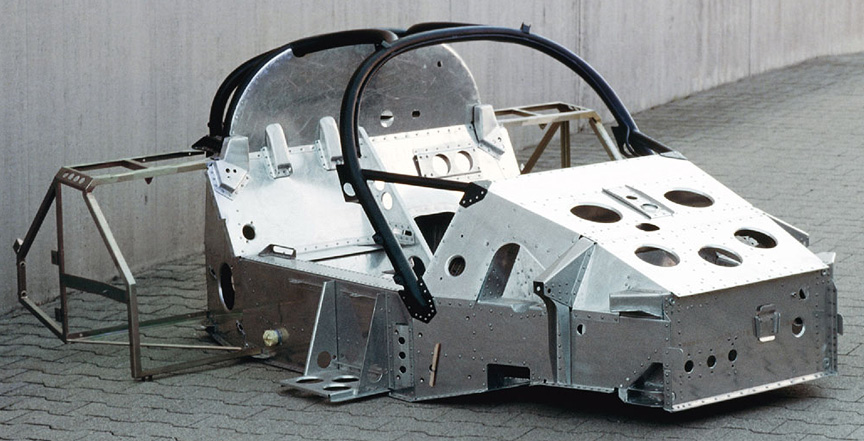
The driver’s feet did not to extend over the centerline of the front wheels per the rules. Other safety measures were carried out with the cockpit and a different engine was installed. The IMSA regulations didn’t allow twin-turbo engines, so a single-turbo engine was used.
The 956 and 962 are extremely identical in looks. Only a sharp eye can notice that the nose of the 956 is showel-shaped and a bit longer than the nose of the 962 that is wedge-shaped and a bit shorter. Private teams created their own modifications to the body or even complete new chassis and new body designs. By the Porsche tradition, the cars built for factory team, have the chassis numbers in the form of 9620xx and the cars built for customers in the form of 9621xx. The privately built cars that used 962 components with their own chassis, had their own chassis numbers.
The 962’s story is one of longevity and versatility. And this longevity has all to do with the solid engineering that went into the car from the start. As the competition heated up, others may have outperformed the 962 in one category or another, but none could match its performance depth. That the 962 continued to win races into the mid-90s, when it frankly had no business doing so given the competition and vastly different regulations, is a testament to this.
Notable Porsche 962 Chassis Numbers
There were 10 works team chassis numbers, ‘001’ was built for IMSA, and is in the factory museum. 002 / 003 / 004 were the 1985 and 86 Rothmans world championship team cars 005 was a sprint car, only raced once as a Rothmans car. ‘006’ is in the factory museum. 007 and 008 were the new lightweight Rothmans cars for ’87 and raced until after Le Mans (007 was crashed prior to LM ’87) ‘009’ was the replacement Supercup car for the crashed 005. 010 was the last works car built – specifically to win the 1988 Le Mans 24 hrs.
After withdrawing as a factory race team in 1988, Porsche built 6 further factory numbered chassis for the works supported Joest team, numbered ‘011’ to ‘016’. After the works withdrew in 1988, the privateer teams needed to carry on their own development to stay competitive with the Jaguars and Sauber Mercedes.
Both BRUN and Richard LLOYD led the way by redesigning the chassis, both using part carbon and honeycomb, with aero similar to the Jaguars/Saubers with short tail and separate wings. At Le Mans BRUN surprised all in 1990, when their standard factory chassis REPSOL car ran with the Jaguar and Nissan throughout the race – losing 2nd place with just 15 mins to go. We cover several of these individual cars in-depth here.
Overall, about 126 cars were made. The breakdown is approximately as follows:
| Complete cars (by Porsche) | Approx. 19 units | Approx. 54 units |
| Complete cars (by Others) | Approx. 16 units | Approx. 37 units (including Dauer street and GT1 cars) |
The Porsche 926 & Racing Story
Porsche debuted the 962 in February 1984 at the 24 Hours of Daytona with Mario and Michael Andretti driving the factory car. They started from the pole position and led the race until had to retire due to technical problems. This car, the 962-001, was the only IMSA-962 used by the factory team and was only used once. In additon to the factory team 962-001, in 1984 Porsche produced six 962s for American customers and one Group C1 car. Two private 962s were entered for the 1984 Le Mans. Unfortunately the Swap Shop IMSA-spec 962 (single turbo 2.9) had to retire because of the ignition system failure and the Skoal Bandit 962 C (twin-turbo 2.6) because of the accident. This was the first 962 C, chassis number 962-105. Luckily both teams had 956s, too, that would finish on podium.
The 962 starts winning the races: 1984 Watkins Glen 6 hours, Pocono 500 km, Daytona 3 h, 1985 Daytona 24 h, Miami 3 h, Sebring 12 h, Mugello 1000 km, Laguna Seca 300 km, Silverstone 1000 km, Charlotte 500 km, Lime Rock 2 h, Mid-Ohio 500 km…
For the Le Mans practice sessions in 1985, Porsche ran the fully water-cooled 3-litre twin-turbo with around 515 kW. For the race, they opted for the proven water- and air-cooled 2.65-litre unit with around 470 kW. Despite the factory team participating with the 962 C cars, the 1985 Le Mans 24 h race was won again by the same team, same car and even one of the drivers as a year before – the 956 of New-Man sponsored Joest Racing team. The best 962 scored third driven by Hans-Joachim Stuck/Derek Bell. The significance of the 3rd place 962 #2 is really great because Stuck drove a qualification lap in 3:14.8 averaging 156.5 mph/251.815 kmh which is an absolute record at Le Mans. 962 was the fastest car for years and later chicanes were added to the main straight, so the record couldn’t be broken anymore.
The 962 was victorious at 1985 Watkins Glen 3 hours, Hockenheim 1000 km, Sears Point 300 km, Mosport 1000 km, Road America 500 miles, Pocono 500 km, Brands Hatch 1000 km, Columbus 500 km, Daytona 3 h, 1986 Daytona 24 h, Sebring 12 h…
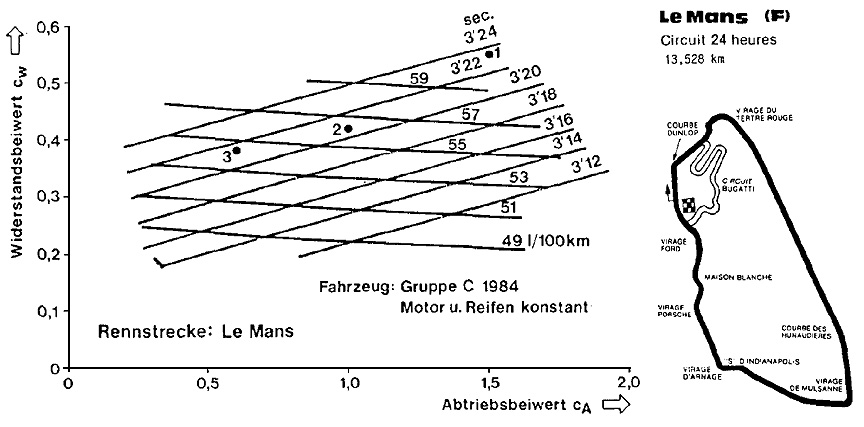
The Porsche DoppelKupplung (PDK) double clutch gearbox was first used for racing in 1984 in a 956. Following further tests, in 1986 the 962 C, chassis 962-003, was equipped with the PDK and was even able to chalk up a victory at the Monza 360 km race.
The double clutch gearbox contains two separate clutches and their own gearbox groups. One of the clutches transmits the torque to the odd-numbered gears 1-3-5 and the other to the even-numbered gears 2-4. Two gears are engaged at the same time: the current driving gear and the pre-selected higher or lower gear. The switchover is done by the simultaneous hydraulically actuated opening of the first and closing of the second clutch, therefore the twin-clutch gearbox has no shifting interruptions in normal use. When you need to change two gears at a time, let say from 5th to 3rd, then it takes time as they both are on the same shaft.
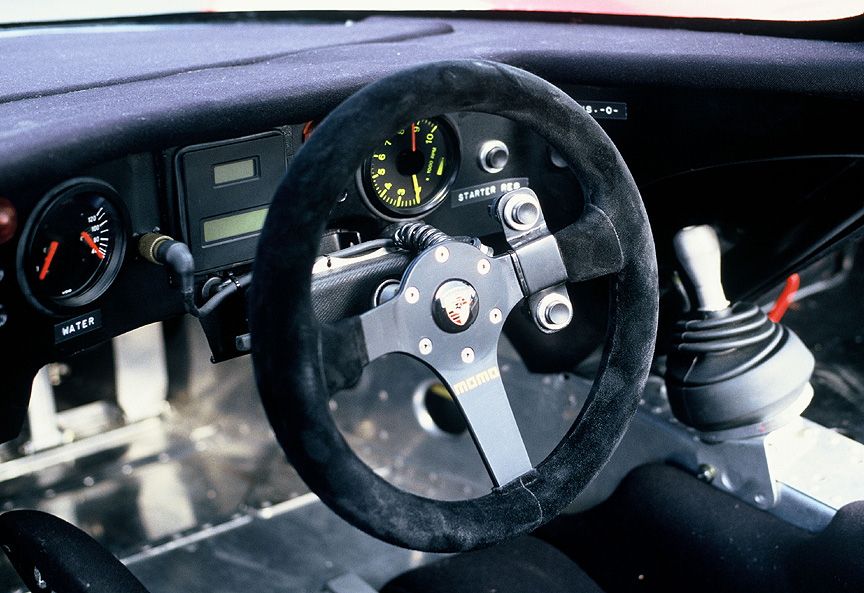
After Monza and before the 1986 Le Mans race, the 962 brought home more victories: Riverside 6 hours, Charlotte 500 km, Lime Rock 150 laps…
At the 1986 Le Mans qualification the 962 #2 was fastest with 3:15.990. For comparison, the 962 #3 (chassis 002) was equipped with the PDK and the qualification time was 3:25.340, so almost 10 seconds behind. The allowed fuel consumption in Group C remained at 51 L/100 km (510 litres for 1000 km) for the 1986 season. The cars were allowed to have 100 litre fuel tanks and filling-up was governed at maximum 60 litres per minute for safety reasons.
In the night, the race was overshadowed by the fatal accident of Kremer Racing’s driver Jo Gartner, who got killed when the gearbox of his 962 broke on Mulsanne straight and locked the rear wheels at top speed. The fastest 962 (#2) was also out because of an accident. The 962 #1 which was second in qualification, had to win the race as the racing number suggests and Hans-Joachim Stuck/Derek Bell/Al Holbert were up to the task. This is chassis 962-003, the one that won at Monza with PDK, but had manual gearbox for Le Mans. The second place went to the 962 #17 of Oscar Larrauri/Jésus Pareja/Joël Gouhier (Brun Motorsport) and third place to a 956.
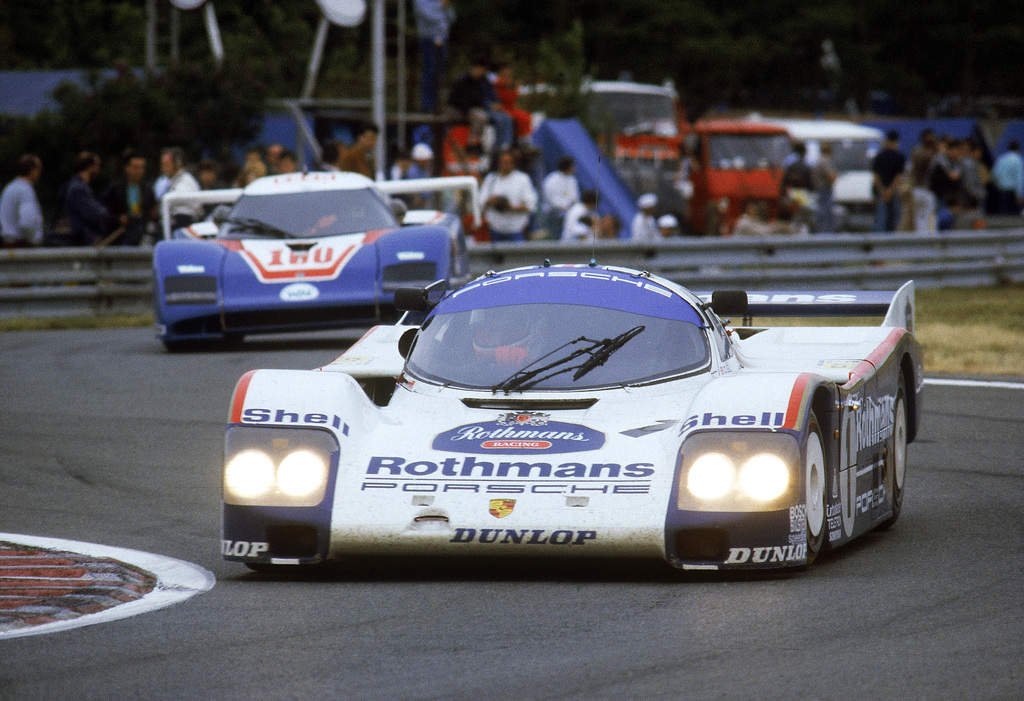
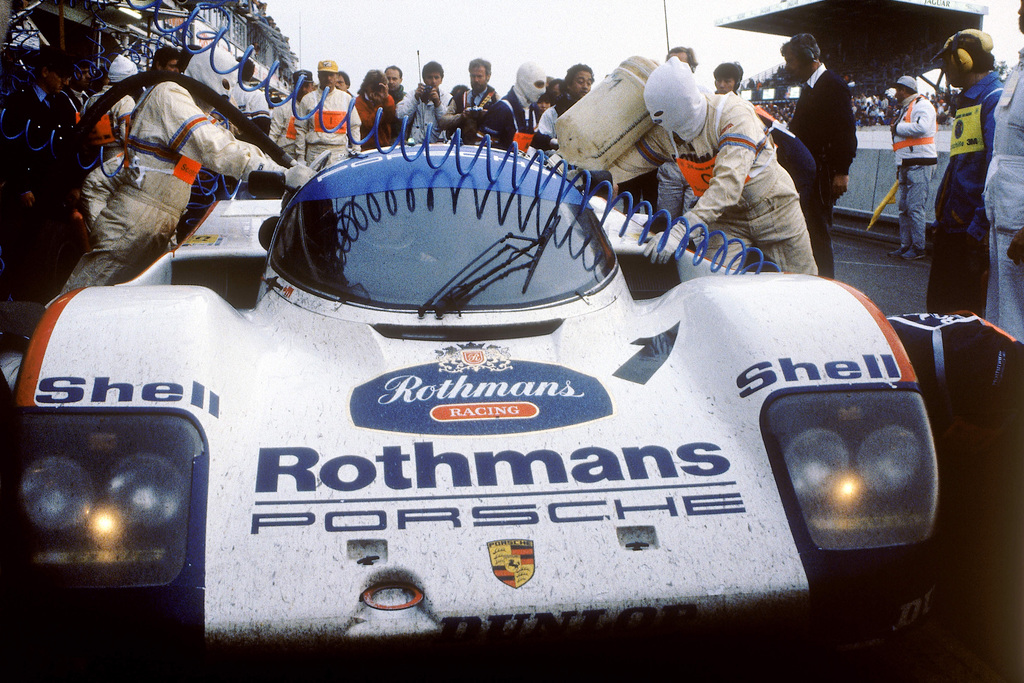
The racing success of the mighty 962 continued: 1986 Mid-Ohio 500 km, Portland 300 km, Sears Point 300 km, Road America 500 miles, Spa 1000 km, Columbus 500 km, 1987 Daytona 24 h, Sebring 12 h, Road Atlanta 500 km, Laguna Seca 300 km, Lime Rock 150 laps, Mid-Ohio 500 km…
Like a year before, factory team fielded three 962s for the 1987 Le Mans. Their #19 car was totalled already in the practise, so two were left for the race..
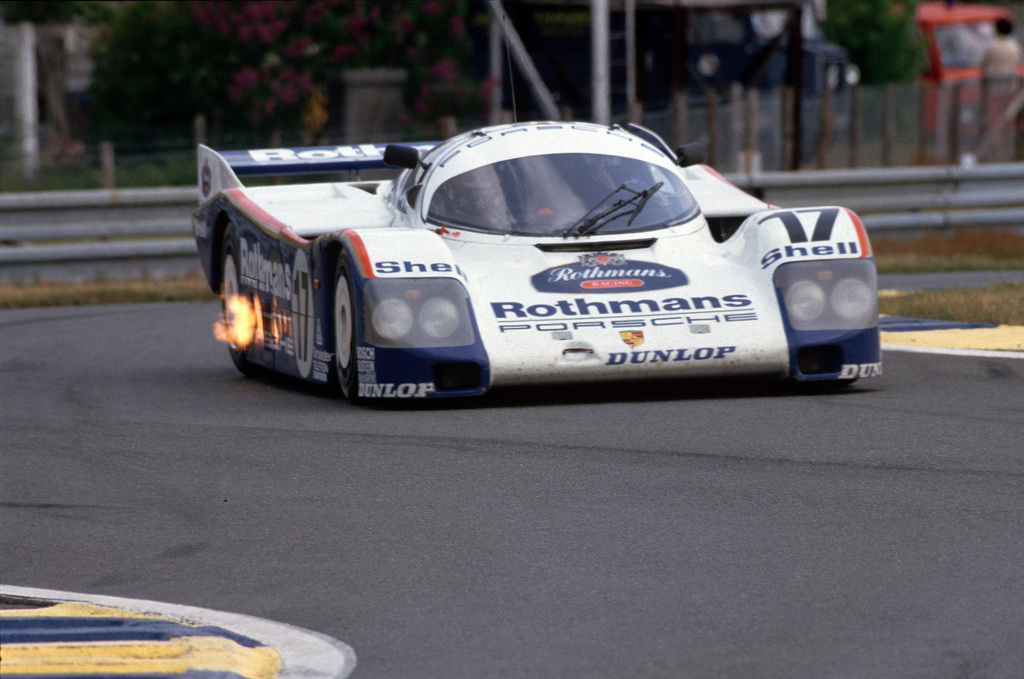

The 962 #18 of Bob Wollek/Jochen Mass/Vern Schuppan, which was the fastest in the qualification, retired because of the engine and the second fastest qualifier, the 962 #17 driven by Hans-Joachim Stuck/Derek Bell/Al Holbert won the race. The second place was taken by a Primagaz 962 #72 driven by Jürgen Lässig/Pierre Yver/Bernard de Dryver and third place went to a Porsche-powered Cougar C20 (also Primagaz Compétition). Stuck/Bell/Holbert won an impressive 260 km ahead of 2nd place. The only margin greater recorded in Le Mans was back in 1927.
More victories were captured with the 962: 1987 Norisring 200 miles, Watkins Glen 500 km, Columbus 300 km, 1987 Fuji 500 km, 1988 Fuji 500 km, Sebring 12 hours…
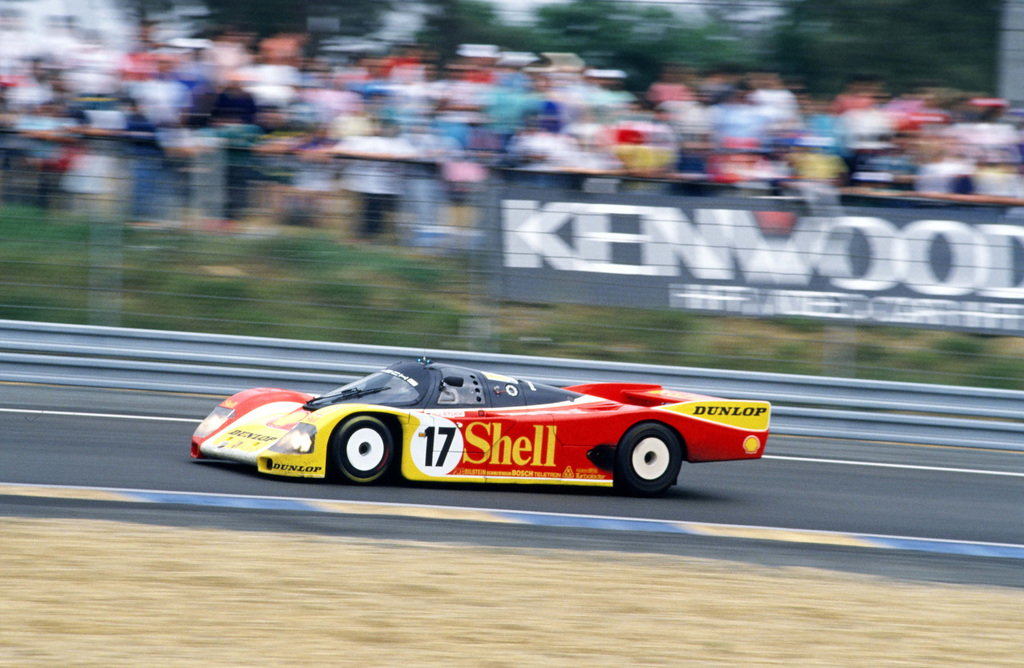
Despite the 956/962 had been on top for such a long time, Porsche was still confident on its 962 for Le Mans again in 1988. The qualification was won by the factory team’s 962 #17. The car was driven by Hans-Joachim Stuck/Klaus Ludwig/Derek Bell and was leading the race, but Ludwig ran out of fuel and lost time in getting back to the pits on the starter motor. Later on, the car was also held up by a clogged fuel filter. Despite that, the #17 Porsche still scored second. The event was won by a TWR-Jaguar, which was 8 seconds slower per lap (qualification result vs. #17 Porsche). The third place went to Blaupunkt-sponsored Joest Racing 962-116 #8 driven by Stanley Dickens/”John Winter”(Louis Krages)/Frank Jelinski.
The 962 neared the end of its lifecycle and the victories were harder to come. Still, important races like the 1989 Daytona 24 hours and Fuji 1000 km were won with 962. The car was too old for the factory team to compete at Le Mans, but private teams fielded a record of seventeen 962s. Joest Racing’s 962 driven by Bob Wollek/Hans-Joachim Stuck managed to lead the race for a while, but had a couple of technical problems and scored third as the best Porsche.
Every 962 victory is an achievement now and so has the 1989 Fuji 500 miles to be mentioned…
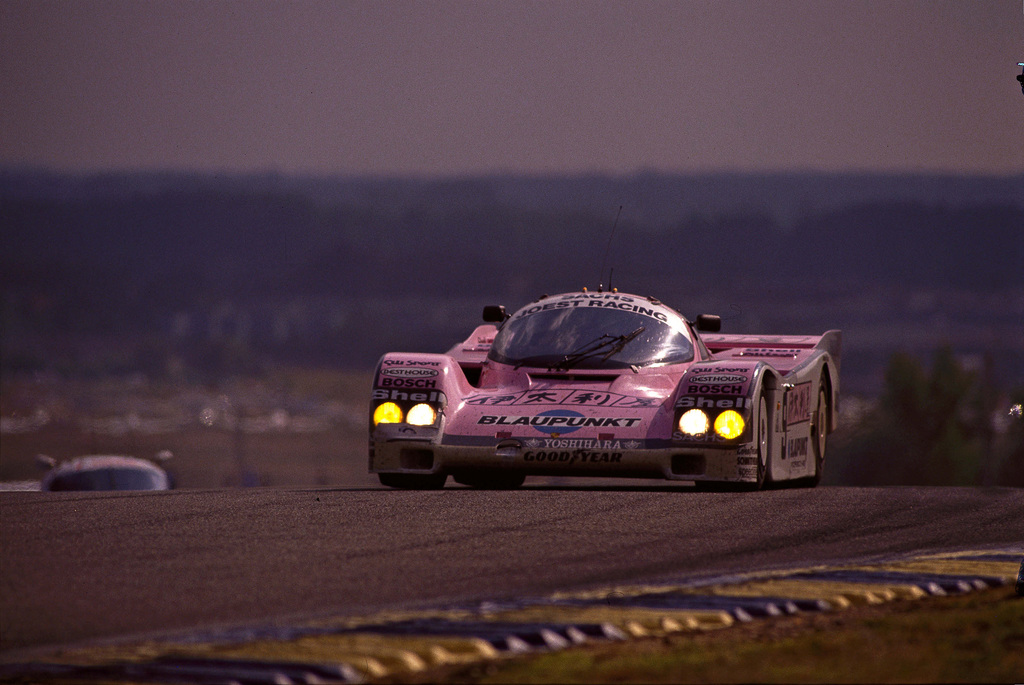
For the 1990 Le Mans 24 hours private teams field a new record of eighteen 962s! Right up to the last hour of racing, the Porsche of Walter Brun’s team, with Oscar Larrauri, Jesus Pareja and the team owner at the wheel, were on track for a podium finish, at times even taking the lead, when engine failure sidelined their car after 23 hours and 46 minutes. The 962 C fielded by the Japanese Alpha Racing team with Tiff Needell, David Sears and Anthony Reid, scored third.
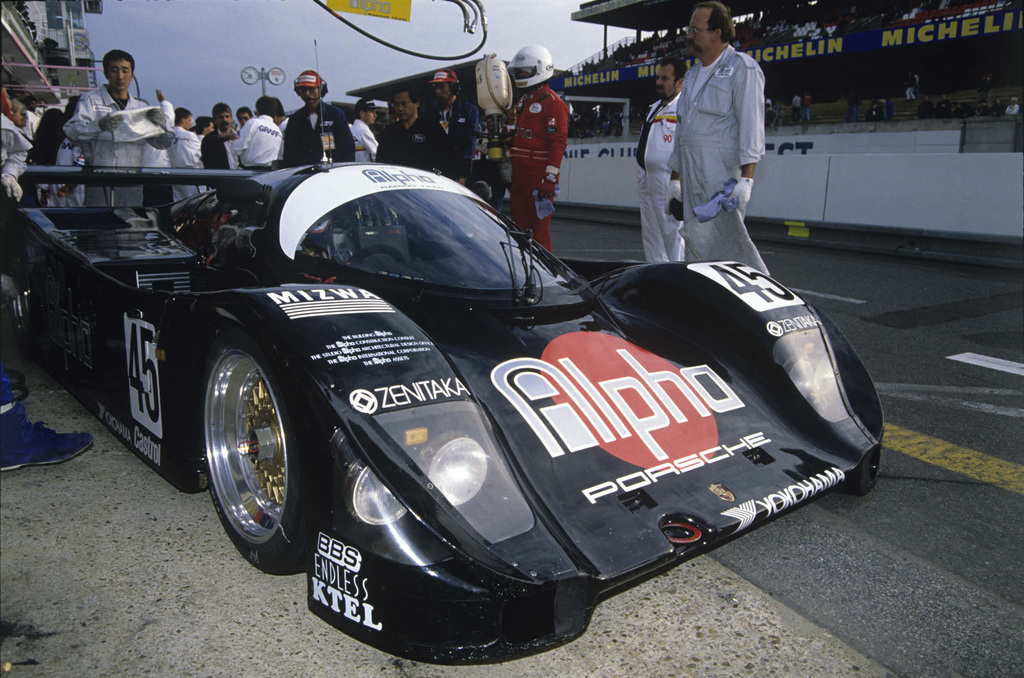
While the 962 still managed to win the 1991 Daytona 24 hour race in the USA, the new rules in Europe stated 1000 kg minimum weight for turbo-charged prototypes and the 962 was out of competition. The best 962 scores 7th at the Le Mans in 1991. The winning Mazda with rotary engine had the gearbox from the 962. Again, for the 1992 the regulations were changed and the allowable amount of fuel was dramatically cut and the best Kremer-Porsche 962 CK6 finished 7th at the 1992 Le Mans race. Almost as the swan song, the 1993 Road America 500 km race was won by a 962.
New rules and classes were announced in good time for the 1994 racing season in Europe. The fastest prototype class was now called the LMP1 and the fastest production car based class the GT1. As the production car based vehicles were considered slower than the prototypes, the GT1 cars were allowed to have larger fuel tanks and larger air restrictors than the LMP1 cars. At least one street-legal car had to exist to participate in the GT1 class. This loophole in the rules was used by Jochen Dauer’s company to build the first street-legal 962. Despite being right-hand-drive, the Dauer 962 Le Mans was registered in Germany and showed at the 1993 IAA Frankfurt Motor Show.
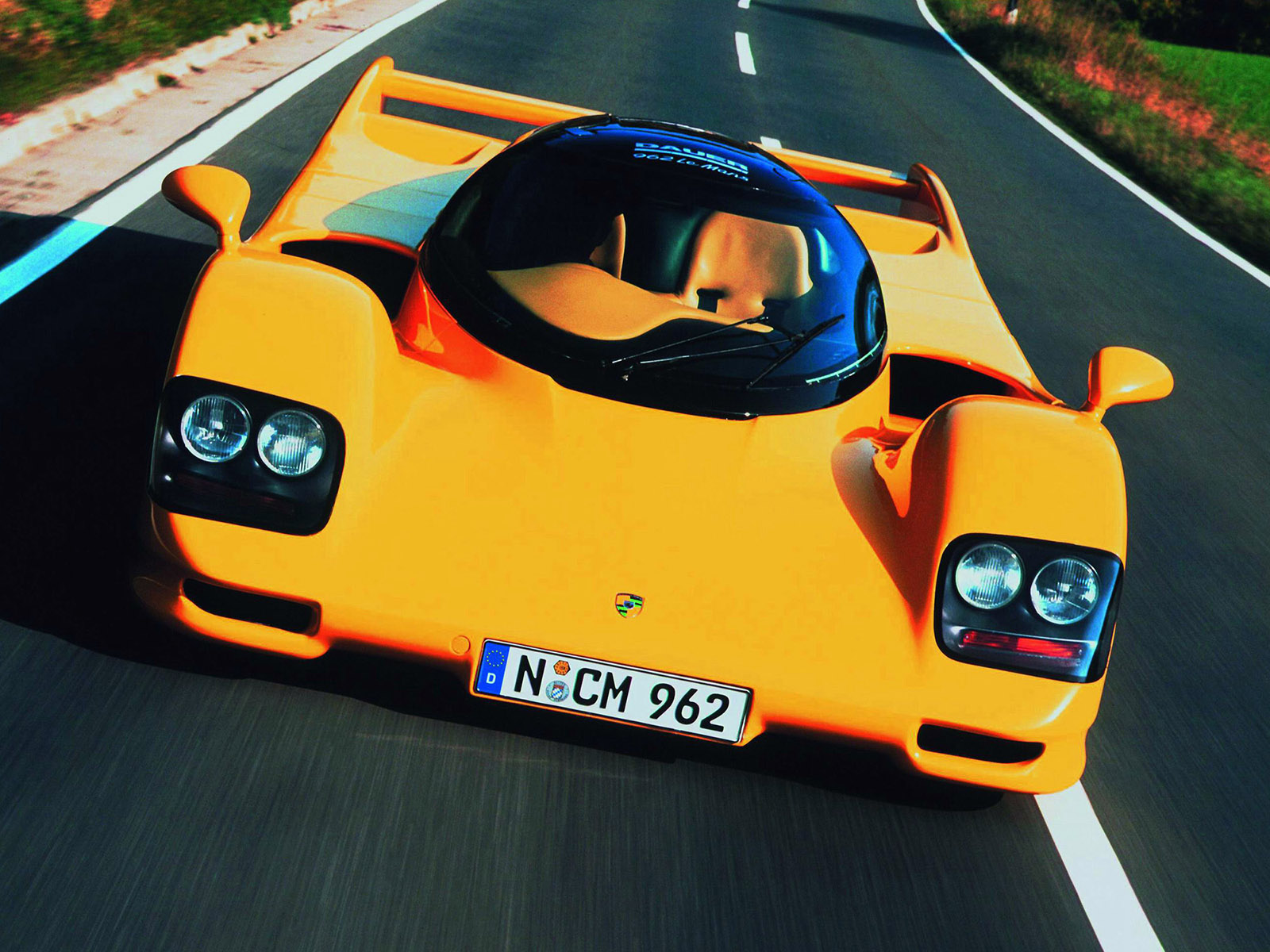
Two Dauer 962 LM were listed for the 1994 Le Mans in GT1 category. The result of the race was that the Dauer 962 #36 driven by Mauro Baldi/Yannick Dalmas/Hurley Haywood won the race and the sister car #35 driven by Hans-Joachim Stuck/Thierry Boutsen/Danny Sullivan scored third.
In addition to Jochen Dauer, racing driver and team leader Vern Schuppan created a street legal supercar called Schuppan 962 CR. The car had the engine, gearbox and axle parts from Porsche, but was otherwise his own design with his own chassis. Some design features of the Porsche 959 were used.
